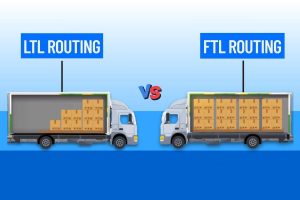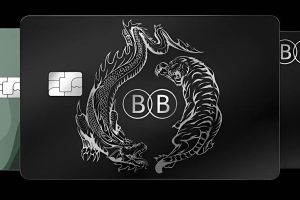Out looking for the perfect person for the job? Searching for, interviewing, and hiring the right person is an art form. Every step—from setting up the interview to making the final call—matters a ton.
So, whether you’re a seasoned interviewing professional or fearfully dipping your toes into the world of hiring, hang tight! You’re about to get a crash course in turning those nerve-wracking interviews into opportunities to snag the best fit for your team.
Getting Ready for the Interview
Set the Stage
Prepping for an interview is key to snagging the right candidate. Let’s make sure we’re setting up a top-notch scene for a meaningful chat—think environment, smart question crafting, and making sure the interviewers are on their A-game.
Creating a Warm Welcome
You know what they say—first impressions are everything. Make sure your interview space is comfy and inviting. A clean, quiet spot with good lighting and cozy chairs will do the trick. Don’t forget to:
- Give a warm hello when they walk in
- Offer a drink to show you care
- Keep disruptions out of the room
This way, candidates can shake off the jitters and open up, paving the way for a real talk.
Asking the Right Questions
It’s all in the questions you ask. Good questions lead to good answers. Here’s how to nail it:
- Make it relevant: Tailor questions to check the skills needed for the job.
- Dig into the past: Asking about past deeds to predict future ones. “Tell me about a time when…” questions are golden.
- Mix it up: Combine open-ended and specific scenario questions to see their thinking cap in action.
Keeping questions sharp helps you gather the intel you need to make a smart choice.
Prepping the Interviewers
Your interviewers are your front line. They must master interviewing techniques for employers to ensure they know their stuff. Key training areas include:
- Role smarts: They should get the nitty-gritty of the job.
- Staying legal: They need to know what’s off-limits to ask.
- Fair scoring: Using a standard scorecard to rate responses helps keep things square.
Equipping your interviewers well ensures a fair and effective interview. Get this right, and you’re well on your way to landing the perfect match.
Conducting the Interview
The interview is your stage to connect with candidates and assess their fit for the role. Let’s navigate through this critical face-to-face encounter.
Setting the Scene
Kicking things off with a warm welcome and a cozy setting helps put candidates at ease right from the get-go. Start with some light chit-chat on safe topics to break the ice. The aim here is to create a vibe where candidates feel comfortable enough to let their guard down and be themselves.
Evaluating Candidates
Mixing up open-ended questions with specific ones during the interview helps you get a handle on both the scope and depth of a candidate’s experience. Stick to behavioral and situational questions that tie directly to the job’s challenges.
Scout for solid examples from their past work that gives a sneak peek into how they might handle future tasks, making sure these align with what you know works best for your company.
Note-Taking Strategies
Good note-taking is key to remembering what candidates dish out during the interview. Stick to a clear method like STAR (Situation, Task, Action, Result) to jot down responses. Keep your notes brief and uniform to ensure you snag all the crucial bits without missing a beat in the conversation.
Remember, keeping eye contact is crucial—it shows you’re all in and genuinely interested.
After the Interview
Once the interview is wrapped up, your job as an HR professional isn’t over. Now comes the critical analysis, communication, and decision-making.
Analyzing Interview Data
Take the time to review your notes and any evaluations you completed during the interview. Look for patterns in the candidates’ responses that align with the job competencies. Summarize each candidate’s strengths and weaknesses in a table for easy comparison:
| Candidate Name | Strengths | Weaknesses | Overall Fit |
|---|---|---|---|
| John Doe | Team player, tech-savvy | Struggled with leadership questions | Moderate |
| Jane Smith | Strong leadership, excellent communication | Less experienced with specific software | High |
| Alex Johnson | Highly experienced, self-motivated | Possibly overqualified? | High |
Candidate Feedback
Communicate with candidates promptly. If they’ve been shortlisted, let them know what the next steps are. For those who won’t be moving forward, provide constructive feedback if possible. Example email template for non-selected candidates:
Subject: Your interview with [Company Name] Dear [Candidate Name], We appreciate the time you invested in interviewing with us for the [Position Title] role. After careful consideration, we’ve decided to proceed with other candidates whose skills and experience align more closely with our needs for this position. We are thankful for your interest in [Company Name] and wish you the best in your job search. Sincerely, [Your Name]
Making the Decision
First things first, let’s dive into the data you’ve gathered. This info will be your guiding light in choosing the right person for the job. Think about what the role really needs, how the new hire will gel with the team, and their chances to climb the ladder at your company.
It’s all about balance! You’ve gotta weigh their skills against how well they’ll fit into the company culture. It’s like finding the perfect pair of jeans—comfort matters just as much as the look.
Alright, you’ve picked your star player. Now it’s time to make it official. Whip up a job offer that spells out the dough they’ll be making, the perks they’ll get, and any other nifty details. Make it enticing—this is your moment to shine!
A straightforward example:
| Component | Detail |
|---|---|
| Position | Senior Graphic Designer |
| Start Date | June 1, 2024 |
| Annual Salary | $75,000 |
| Benefits | Health, dental, 401(k), 3 weeks vacation |
| Reporting To | Creative Director |
Your attention to detail after the interview can make all the difference in building a strong and cohesive team.
Wrapping It Up
Boom! You’re ready to kick your interviewing fears and woes to the curb because you now know the ins and outs of crafting a stellar interviewing process. Careful planning, smart questioning, and genuine engagement all equate to a smooth interview process.
Keep these pointers in mind, stay true to your company’s values, and you’re sure to find that perfect match. So, take a deep breath, trust the process, and happy hiring!












